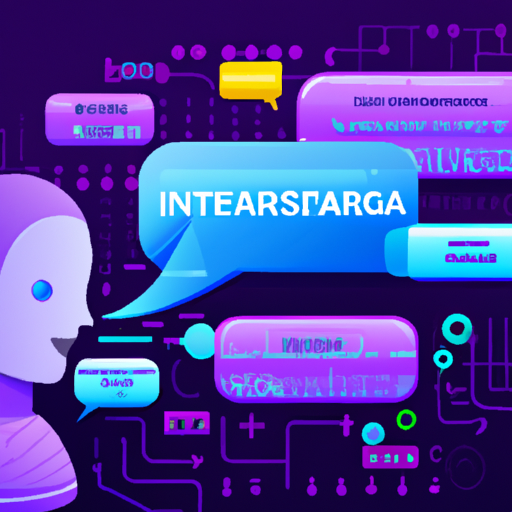
The Rise of Natural Language Processing: How AI is Changing the Way We Communicate
-
Table of Contents
- Introduction
- Exploring the Potential of Natural Language Processing in Business Applications
- Examining the Challenges of Natural Language Processing in AI Development
- Understanding the Role of Natural Language Processing in Automating Tasks
- The Impact of Natural Language Processing on Human-Computer Interaction
- Exploring the Benefits of Natural Language Processing: How AI is Enhancing Communication
- Conclusion
“Unlock the Power of AI: Experience the Future of Communication with Natural Language Processing!”
Introduction
The rise of Natural Language Processing (NLP) is transforming the way we communicate. NLP is a branch of Artificial Intelligence (AI) that enables machines to understand and interpret human language. It is used to process and analyze large amounts of data, such as text, audio, and video, to extract meaningful insights. NLP is being used in a variety of applications, from customer service chatbots to automated translation services. With the help of NLP, machines can now understand and respond to human language, making communication more efficient and accurate. This article will explore the rise of NLP and how AI is changing the way we communicate.
Exploring the Potential of Natural Language Processing in Business Applications
Natural language processing (NLP) is a rapidly growing field of artificial intelligence that has the potential to revolutionize the way businesses operate. NLP is a form of machine learning that enables computers to understand and process human language. By leveraging the power of NLP, businesses can automate tasks that would otherwise require manual labor, such as customer service, data analysis, and document processing.
NLP can be used to automate customer service tasks such as responding to customer inquiries, providing product recommendations, and resolving customer complaints. By leveraging NLP, businesses can provide faster and more accurate customer service, leading to improved customer satisfaction and loyalty. Additionally, NLP can be used to analyze customer data and provide insights into customer behavior, allowing businesses to better understand their customers and tailor their services accordingly.
NLP can also be used to automate document processing tasks such as document classification, summarization, and sentiment analysis. By leveraging NLP, businesses can quickly and accurately process large volumes of documents, allowing them to make more informed decisions and save time and money. Additionally, NLP can be used to extract insights from unstructured data, such as customer reviews, allowing businesses to gain valuable insights into customer sentiment and preferences.
Finally, NLP can be used to automate data analysis tasks such as text mining and predictive analytics. By leveraging NLP, businesses can quickly and accurately analyze large volumes of data, allowing them to gain valuable insights into customer behavior and market trends. This can help businesses make more informed decisions and stay ahead of the competition.
In conclusion, NLP has the potential to revolutionize the way businesses operate. By leveraging the power of NLP, businesses can automate tasks that would otherwise require manual labor, gain valuable insights into customer behavior and market trends, and make more informed decisions. As the technology continues to evolve, businesses should explore the potential of NLP to stay ahead of the competition.
Examining the Challenges of Natural Language Processing in AI Development
Natural language processing (NLP) is a rapidly growing field of artificial intelligence (AI) development that has the potential to revolutionize the way humans interact with machines. However, despite its potential, NLP is still a relatively young field and is faced with a number of challenges that must be addressed before it can reach its full potential.
One of the primary challenges of NLP is the complexity of natural language. Natural language is highly contextual and can be interpreted in many different ways, making it difficult for machines to accurately interpret and respond to human input. Additionally, natural language is constantly evolving, making it difficult for machines to keep up with the latest trends and nuances.
Another challenge of NLP is the lack of data available for training AI models. Natural language data is often unstructured and difficult to process, making it difficult to create accurate models. Additionally, the data available is often limited in scope, making it difficult to create models that can accurately interpret a wide range of natural language inputs.
Finally, NLP is also faced with the challenge of creating models that can accurately interpret and respond to human input in real-time. This requires models to be able to process large amounts of data quickly and accurately, which is a difficult task for current AI models.
Despite these challenges, NLP is still a rapidly growing field of AI development and has the potential to revolutionize the way humans interact with machines. With continued research and development, these challenges can be addressed and NLP can reach its full potential.
Understanding the Role of Natural Language Processing in Automating Tasks
Natural language processing (NLP) is a branch of artificial intelligence that enables computers to understand and process human language. It is a powerful tool that can be used to automate a variety of tasks, from understanding customer queries to translating text from one language to another.
NLP works by breaking down language into its component parts, such as words, phrases, and sentences. It then uses algorithms to analyze the structure and meaning of the language. This allows computers to understand the context of a sentence and extract the relevant information.
NLP can be used to automate a variety of tasks. For example, it can be used to automatically generate customer service responses to customer queries. It can also be used to automatically translate text from one language to another. Additionally, NLP can be used to identify and extract key information from documents, such as customer names, addresses, and phone numbers.
NLP can also be used to analyze customer sentiment. By analyzing customer reviews and feedback, NLP can help businesses identify customer sentiment and gain insights into customer satisfaction. This can help businesses improve their products and services.
NLP is a powerful tool that can be used to automate a variety of tasks. It can help businesses save time and money by automating mundane tasks and providing valuable insights into customer sentiment. As NLP technology continues to evolve, it will become an increasingly important tool for businesses looking to automate tasks and gain insights into customer behavior.
The Impact of Natural Language Processing on Human-Computer Interaction
Natural language processing (NLP) is a rapidly growing field of computer science that has had a significant impact on human-computer interaction. NLP is a branch of artificial intelligence that focuses on the ability of computers to understand and process human language. It is used to create computer programs that can interact with humans in a natural way, allowing for more efficient and effective communication.
NLP has enabled computers to understand and respond to human language in a more natural way. This has allowed for more efficient and effective communication between humans and computers. For example, NLP has enabled computers to understand and respond to natural language queries, allowing users to ask questions in a more natural way. Additionally, NLP has enabled computers to understand and respond to natural language commands, allowing users to control computers with more natural language.
NLP has also enabled computers to understand and respond to natural language conversations. This has allowed for more natural conversations between humans and computers, allowing for more efficient and effective communication. Additionally, NLP has enabled computers to understand and respond to natural language instructions, allowing users to give instructions to computers in a more natural way.
NLP has also enabled computers to understand and respond to natural language feedback. This has allowed for more natural feedback between humans and computers, allowing for more efficient and effective communication. Additionally, NLP has enabled computers to understand and respond to natural language emotions, allowing users to express their emotions to computers in a more natural way.
Overall, NLP has had a significant impact on human-computer interaction. It has enabled computers to understand and respond to human language in a more natural way, allowing for more efficient and effective communication. Additionally, NLP has enabled computers to understand and respond to natural language conversations, commands, queries, instructions, and feedback, allowing for more natural conversations between humans and computers. As NLP continues to develop, it will continue to have a significant impact on human-computer interaction.
Exploring the Benefits of Natural Language Processing: How AI is Enhancing Communication
Natural language processing (NLP) is a branch of artificial intelligence (AI) that focuses on the interactions between computers and human language. It is a powerful tool that is being used to enhance communication in a variety of ways. This article will explore the benefits of NLP and how it is being used to improve communication.
One of the primary benefits of NLP is its ability to automate tasks that would otherwise require manual input. For example, NLP can be used to automatically generate responses to customer inquiries, freeing up customer service representatives to focus on more complex tasks. NLP can also be used to analyze customer feedback and generate insights that can be used to improve customer service.
NLP can also be used to improve the accuracy of machine translation. By using NLP, machines can better understand the nuances of language and provide more accurate translations. This can be especially useful for businesses that need to communicate with customers in multiple languages.
NLP can also be used to improve the accuracy of voice recognition systems. By using NLP, machines can better understand the nuances of human speech and provide more accurate results. This can be especially useful for businesses that need to interact with customers via voice commands.
Finally, NLP can be used to improve the accuracy of text-based search engines. By using NLP, machines can better understand the nuances of language and provide more accurate search results. This can be especially useful for businesses that need to quickly find relevant information.
In conclusion, NLP is a powerful tool that is being used to enhance communication in a variety of ways. It can be used to automate tasks, improve machine translation, improve voice recognition systems, and improve text-based search engines. By leveraging the power of NLP, businesses can improve their customer service, increase their efficiency, and gain valuable insights.
Conclusion
The Rise of Natural Language Processing has revolutionized the way we communicate with each other and with machines. AI has enabled us to interact with machines in a more natural and intuitive way, allowing us to ask questions and receive answers quickly and accurately. This technology has opened up a world of possibilities for businesses, allowing them to automate processes, improve customer service, and gain insights from data. As AI continues to evolve, it will continue to shape the way we communicate and interact with the world around us.








